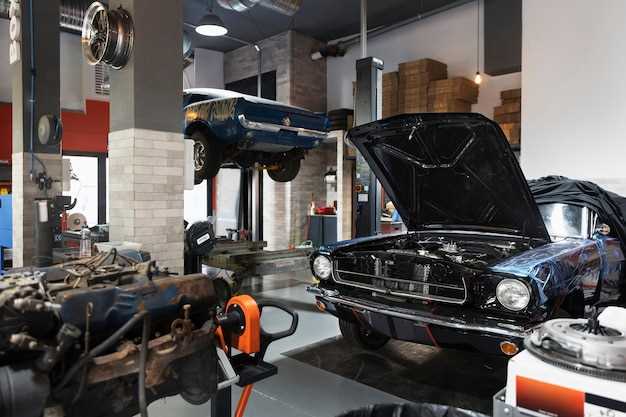
Rewiring classic Japanese cars can be a daunting task, yet it is essential for maintaining the integrity and performance of these automotive treasures. With the right approach, enthusiasts can successfully undertake this project while ensuring safety and accuracy. Proper wiring not only enhances the functionality of the vehicle but also preserves its historical value.
As modern technology evolves, the methods used for wiring have improved significantly. It is crucial to understand the specific requirements of classic models, as they differ greatly from contemporary vehicles. With their unique wiring systems and components, classic Japanese cars present both challenges and opportunities for restoration enthusiasts. Implementing safe rewiring techniques is vital to avoid potential hazards and ensure longevity.
In this article, we will explore several safe methods for rewiring classic Japanese cars, detailing essential practices and tools needed for a successful restoration. By following these guidelines, you can not only restore your vehicle’s wiring but also enhance your overall experience as a car enthusiast. Let’s delve into the details of this intricate process and uncover the best strategies for achieving reliable and safe wiring solutions.
Choosing the Right Wiring Kits for Vintage Models

When rewiring classic Japanese cars, selecting the appropriate wiring kit is crucial for maintaining the integrity and performance of the electrical system. Vintage models often come with unique wiring configurations that differ from modern vehicles, making it essential to choose a kit specifically designed for the make and model of your car.
First, consider the gauge of the wiring. Vintage cars typically use thicker wires to handle higher current loads, especially for components like ignition systems and starter motors. A wiring kit that includes the correct gauge will ensure that your electrical system functions optimally without overheating.
Next, evaluate the material quality of the wires in the kit. Look for kits made from high-quality copper rather than aluminum, as copper provides better conductivity and durability. Additionally, wiring with durable insulation will help protect against wear and environmental factors, ensuring a long-lasting installation.
Compatibility is another critical factor. Ensure that the chosen wiring kit is compatible with your car’s original electrical components. This includes switches, relays, and connectors. A wiring kit specifically designed for classic Japanese cars will typically come with pre-terminated connectors, which can simplify the installation process significantly.
Finally, consider any added features that may come with the wiring kit, such as color-coded wires or detailed instructions. These elements can greatly facilitate the rewiring process, helping you avoid mistakes and ensuring a cleaner, more organized installation.
By carefully considering these aspects, you can select the right wiring kit that not only fits your vintage Japanese car but also enhances its electrical reliability and performance.
Step-by-Step Guide to Removing Old Wiring Harnesses

Removing an old wiring harness from a classic Japanese car is a critical step in the rewiring process. This guide outlines a straightforward procedure to ensure safety and efficiency.
Step 1: Gather Necessary Tools
Before starting, collect all necessary tools, including a socket set, wire cutters, a digital multimeter, and electrical tape. Having a clean workspace will facilitate smoother operation.
Step 2: Disconnect the Battery
Safety is paramount. Begin by disconnecting the negative terminal of the battery to prevent any electrical shorts or shocks during the removal process.
Step 3: Document Existing Wiring
Use a camera or sketchbook to document the current wiring setup. Take clear pictures of connections and wire routes, which will assist in the installation of the new harness.
Step 4: Remove Interior Panels
Carefully remove the interior panels that may be obstructing access to the wiring harness. This might include dashboard components and side panels. Store screws and fasteners in a labeled container for easy reinstallation.
Step 5: Identify the Wiring Harness
Locate the wiring harness that needs removal. Trace it through the vehicle, noting where it connects to essential components such as the ignition system, lights, and sensors.
Step 6: Label Connections
As you disconnect wires from components, label each connection using masking tape. This labeling will make the installation of the new wiring harness straightforward and organized.
Step 7: Disconnect Connectors
Carefully disconnect all connectors associated with the wiring harness. Depending on age and wear, some connectors may be difficult to detach, so gently wiggle them to prevent damage.
Step 8: Cut the Old Wiring
Once all connections are free, use wire cutters to remove the sections of the old wiring harness. Be cautious not to damage surrounding wiring or components as you cut.
Step 9: Remove the Harness
With the harness disconnected and cut, carefully remove it from the vehicle. This process may require some maneuvering, especially in tight spaces.
Step 10: Clean Up
Once the old wiring harness is removed, clean the area of any debris or remnants of the old wires. Inspect the areas for corrosion or damage that may need attention before installing the new harness.
This structured approach ensures a safe and efficient removal of old wiring harnesses, setting the stage for successful rewiring of classic Japanese cars.
Testing and Maintaining New Electrical Connections
After rewiring classic Japanese cars, it’s crucial to ensure that all new electrical connections are functioning properly. Start by visually inspecting each connection for signs of wear, corrosion, or improper terminal engagement. Secure connections are essential for optimal performance, as loose or corroded connections can lead to power loss or electrical failures.
Next, utilize a multimeter to test the voltage at various points along the newly installed wiring. This will help verify that current is flowing correctly through the system. Measure the voltage drop across electrical components to ensure they are operating efficiently. Ideally, the voltage drop should be minimal; significant drops may indicate problems within the wiring or connections.
It is also advisable to perform continuity tests on the wiring. Disconnect power before conducting these tests to avoid potential hazards. Use the multimeter to check for continuity along each wire, ensuring there are no breaks that could disrupt the electrical circuit.
Once the connections have been tested, maintaining them is equally important. Regularly inspect the wiring for any signs of physical damage, such as fraying or cracking. Clean any corroded terminals with appropriate cleaning agents and regularly apply dielectric grease to protect connections from moisture and corrosion.
Documenting your tests and inspections can help identify patterns or recurring issues, which is valuable for ongoing maintenance. Establish a routine schedule for checking the wiring and electrical connections to ensure long-term reliability and safety in classic Japanese cars.




